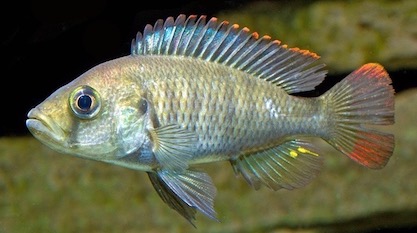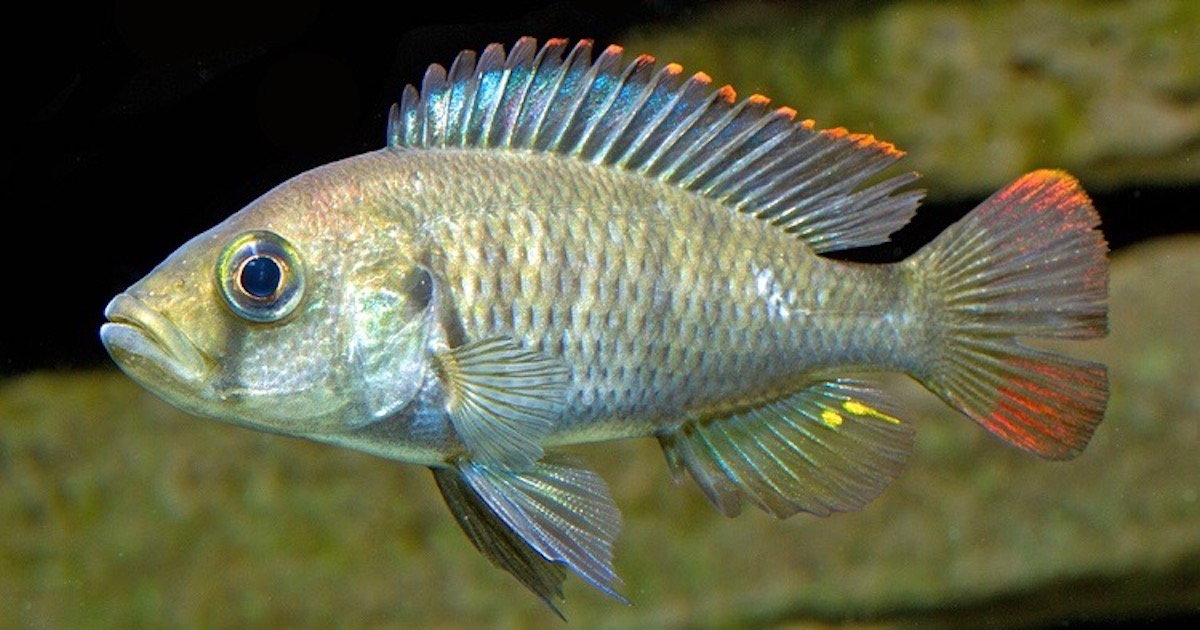 Evolution
Evolution
Time to Put a Lid on Cichlid Evolution Propaganda


According to researchers at Ludwig-Maximilian University of Munich, “Cichlid diversification in East Africa has become a central paradigm in evolutionary biology.” The subject, therefore, merits some attention for Darwin watchers. When evaluating a claim, it’s important to focus on central paradigms. If this is one of them, it looks pretty weak.
Cichlids comprise a large family of fish, primarily living in freshwater habitats. Because they show tremendous variety in size and coloration, evolutionists have taken a keen interest in how they diversify. The news item introduces the family:
Cichlids (Cichlidae) are a group of small to medium-sized fish that are ubiquitous in freshwater habitats in the tropics. They are particularly notable in exhibiting a wide range of morphological and behavioral specializations, such as various modes of parental care, including mouthbrooding. Some species (mainly members of the genus Tilapia) have achieved fame as culinary delicacies and are of considerable economic significance. Cichlids have undergone rapid diversification in Africa, which is home to at least 1100 species. [Emphasis added.]
Defining a “Species”
Before proceeding, it’s important to know what is meant by a species. Darwinians cannot elaborate on an “origin of species” if they cannot define what a species is. Yet in his article “What is a species?” on The Conversation, philosopher Henry Taylor of the University of Birmingham laments, “The most important concept in all of biology is a complete mystery.” Ask an honest scientist to define species, and he should answer, “The truth is, we don’t really have any idea.”
In his recent book, Darwin Devolves, Michael Behe has a lot to say about cichlid fish and polar bears. As luck would have it, Taylor mentions the latter to make his point: Ernst Mayr’s common definition of species as groups that can interbreed and produce fertile offspring breaks down when common “species” are compared. Aren’t grizzly bears and polar bears separate species?
Mayr’s way of thinking about species has some amazing consequences. Recently, due to rising temperatures in the Arctic, polar bears and grizzly bears have been coming into increased contact, and have been producing fertile offspring. The offspring are (adorably) called grolar or pizzly bears. What this suggests is that polars and grizzlies may actually be the same species after all, despite radical differences in size, appearance, hibernation behaviours, diet and so on.
Taylor includes a video of fast-talking host Hank Green of SciShow to elaborate:
Of Mayr’s definition, the host says, “That was a lie.” Well, call it an untruth. Mayr’s definition excludes asexual organisms, and confuses all interbreeding and hybridizing organisms that have long been called separate species. A prominent diagram of Darwin’s finches emphasizes the point.
This is only the tip of a deep and confusing iceberg. There is absolutely no agreement among biologists about how we should understand the species. One 2006 article on the subject listed 26 separate definitions of species, all with their advocates and detractors. Even this list is incomplete.
A Hard Left
So much for the “origin of species.” But then Taylor makes a hard left and mashes every living together into a web of mush, even asserting that there is no such thing as a human species.
In an earlier book, The Edge of Evolution, Michael Behe suggested the existence of an “edge” beyond which Darwin’s mechanism of mutation and selection could not work. In Darwin Devolves, he argues that the edge is at what is traditionally considered the biological “family” level. That would mean that Darwin’s mechanism works at the species and genus level, mostly by breaking not building, but it cannot traverse the edge of family. Dogs will never evolve into cats, or vice versa. Accordingly, a natural taxon might be considered “below the edge” or “above the edge” of evolution.
He points to polar bears and cichlid fish as attainable varieties by Darwin’s mechanism. Any discussion of evolution in the LMU news, under this consideration, becomes moot. ID advocates should not have a problem with variation at that level, especially if the variation comes at the expense of breaking existing genetic information. But does it? Can all cichlid varieties arise by devolution?
The authors’ paper in Nature Scientific Reports says nothing about information gain: nothing about positive selection, innovation, or novel functions. Even references to “evolution” are scarce; one of convergence, one of parallel evolution, and one concerning adaptation. They appear too focused on where to fit a fossil cichlid into the phylogenetic tree to care whether it represents a real biological species, and whether it evolved or devolved.
Cichlids are mentioned recently, though, in three preprints on the biology server bioRxiv. (Preprints are papers posted before peer review.) Let’s see if there’s any novelty there.
In Search of Biological Novelty
One of them by Luca-Penso Dolfin et al. begins, “African Lakes Cichlids are one of the most impressive example [sic] of adaptive radiation. Independently in Lake Victoria, Tanganyika, and Malawi, several hundreds of species arose within the last 10 million to 100,000 years.” The only thing they find, though, is “rearrangement evolution,” which means shuffling of existing information. They say that gene duplication “might lead to neo- or sub-functionalization of the resulting paralogues,” but provide no examples. “Phylogenetic analyses showed that no single species tree can efficiently represent all species relationships, suggesting high levels of repeatedly occurring gene flow,” they say.
A second bioRxiv preprint, by Malinksi et al., concerning “whole-genome sequences of Malawi cichlids,” finds more of the same. Nothing about new functions, new genes, or adaptive innovations. The paper, subsequently published in Nature Ecology & Evolution, contains even less hope for Darwinians. It finds very little sequence divergence between species, and “strong evidence for multiple cross-species gene flow events,” including bi-directional introgression.
The third bioRxiv preprint, by Richards et al., has an interesting title: “Don’t throw out the sympatric species with the crater lake water: fine-scale investigation of introgression provides weak support for functional role of secondary gene flow in one of the clearest examples of sympatric speciation.” Sympatric speciation (as opposed to allopatric speciation) is theoretically a Darwinian “origin of species” event within a breeding population that is not reproductively isolated. But again, they are talking about gene flow, which according to Mayr would indicate these are all members of the same biological “species” in spite of whatever phenotypic or behavioral differences they exhibit. When you start with an urn of colored marbles, you might get different combinations. Darwin needs new marbles with new colors. Gene flow, hybridization, and introgression only shuffle existing marbles around. Whatever shuffles in can shuffle out.
That’s Not Evolutionary Progress
None of these papers talks about new functions arising by mutation, having been selected by positive natural selection because of some exciting new function, organ, or trait that didn’t exist before. All the variants are closely related phenotypes within the cichlid family that can share genes through various mechanisms, and find comfortable habitats to survive in, just like polar bears. Since no scientist can offer a definition of “species” that can withstand all the exceptions, one has to conclude that cichlids diversify below Behe’s edge of evolution. If a cichlid evolved a new family, that would be impressive.
In Darwin Devolves, Michael Behe discusses the variability of cichlid fish and finds them to be all “one big family” whose differences are “small potatoes” compared to the stories told about them.
The huge number of brand-new cichlid species in Lake Victoria has been widely hailed as the most spectacular example of evolution in (relatively) modern times and spoken of in breathless terms everywhere from popular articles, to student textbooks, to professional publications. Yet just as with Darwin’s finches, if classification categories were represented as the eight digits of a sum of money totaling hundreds of thousands of dollars, cichlid evolution in the African Great Lakes would be confined to the pennies and dimes columns on the right. Compared to the vast sweep of life, that’s just evolutionary change. Even the IRS tells taxpayers to round off the cents columns in their tax returns. If that were applied to evolutionary biology, all the touted variation of cichlids would be disregarded.
Press releases continue to mislead the public with extravagant claims that “Cichlid diversification in East Africa has become a central paradigm in evolutionary biology.” The public is fed stories that cichlids provide spectacular examples of Darwinism in action. As a look into the evidence shows, there is nothing new under the cichlid sun. One fish, two fish, red fish, blue fish: they are all members of the same family. It’s time to put a lid on the propaganda and face the facts: Darwin devolves or shuffles stuff around; he does not blindly invent watches.
Photo: Haplochromis nyererei, a cichlid from Lake Victoria, by Kevin Bauman [CC BY 1.0], via Wikimedia Commons.
